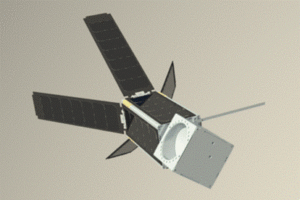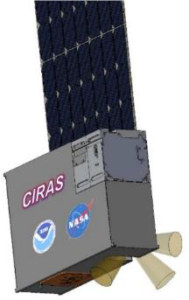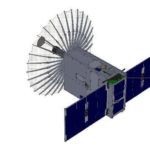SmallSats are playing an increasingly important role in Earth remote sensing. While their benefits may only be realized in the upcoming decades, early successes show tremendous promise—both in terms of cost avoidance and agile technology insertion. INNOVIM is helping our customers and nation take a leadership role in the development and deployment of this emerging suite of technologies.

SmallSats focus on spacecraft with a mass less than 180 kilograms. CubeSats are a class of SmallSats, termed “nanosatellites,” that use a standard size and form factor consisting of “one unit” or “1U” measuring 10x10x10 cm, configurable in multiples of 1, 1.5, 2, 3, 6, and even 12U (etc.).
The European Organization for the Exploitation of Meteorological Satellites (EUMETSAT) held its annual meteorological satellite conference in Rome at the stunning campus of Cinecittà Studios, six miles from downtown Rome. INNOVIM’s Dr. Philip Ardanuy presented to the plenary session a talk entitled “Earth Observing SmallSats – Initial Successes and Future Promises.”

His presentation explored “U-Class” satellites as an emerging disruptive innovation. Since many of the scientific research concepts and hoped-for future operational instruments available through Earth-Observing SmallSats are unaffordable in today’s fiscally austere environment, the Earth observing community is turning to CubeSats. One indicator of that shift: between 2010 through 2015, NASA’s CubeSat Launch Initiative (CSLI) has funded 119 CSLI projects. Here are a few examples of the CubeSat trend:
NASA selected the Micro-sized Microwave Atmospheric Satellite (MicroMAS) CubeSat proposal for a complete mission – Time-Resolved Observations of Precipitation structure and storm Intensity with a Constellation of CubeSats (TROPICS). The TROPICS constellation will consist of up to four 3U CubeSats in each of three orbital planes with a planned launch in late 2019. Read more about it here.
NOAA identified the need for an Earth Observing Nanosatellite – IR (EON-IR) as a low-cost way to mitigate the potential data gaps in the JPSS Cross-track Infrared Sounder (CrIS). CSLI selected the CubeSat Infrared Atmospheric Sounder (CIRAS) to measure upwelling Earth radiation. After 22 months of development, spacecraft integration & test, the 6U CIRAS could be launch-ready as early as June 2018.
The very advanced prototype CSLI RainCube is an exciting and innovative flight system to develop, launch, and operate the first radar on a 6U CubeSat. It would provide space validation of Ka-band (35.75 GHz) precipitation profiling radar.
Dr. Ardanuy also discussed the private-venture-funded Sustained Ocean Color Observations using Nanosatellites (SOCON) program. SOCON has already built two low-cost, multispectral, ocean-color sensors with much better spatial resolution than the predecessor Sea-viewing Wide-Field Sensor (SeaWiFS) used for collection coastal-margin to near-shore data. The new sensors collect all eight SeaWiFS spectral bands, with 120m spatial resolution (vs. SeaWiFS 1km) in a 230km swath from a 575 km orbit. It is 125x smaller (10×10×10cm) & 45x lighter (<1kg) than SeaWiFS, with a SeaWiFS-comparable Signal-to-Noise Ratio, and will be launch-ready in 2018.

Dr. Ardanuy posed this question: “Are small satellites the new normal?” Small satellites are not new—in 1957 we saw the “grapefruit-sized” Sputnik. From the 1960-1990s the Earth was observed by school bus-sized, billion-dollar spacecraft with many large instruments and burdened with $100M launch costs.
Far less costly, and increasingly capable, small satellites are here to stay, sharing a ride – and the cost – to orbit on publicly and privately funded launch vehicles. The National Research Council in 2000 and 2016, Congress via the Weather Act in 2017, and NASA and NOAA, are committing a growing budget pool to Earth-Observing SmallSats, but the private sector may ultimately drive the evolution. Like the emergence of personal computers in the 1980s, low cost, competition, and global user demand will fuel a market for affordable small-satellite Earth sensor data.
Acknowledging that that Earth Observing SmallSats will play an important role in Meteorology in the future, Dr. Ardanuy will host the First AMS Conference on Earth Observing SmallSats in Austin, Texas, this coming January. With a science keynote talk by Dr. Zurbuchen, head of NASA’s Science Mission Directorate, the conference will engage industry, academic, and government leaders in sharing insights into the emerging CubeSat/SmallSat trend.

